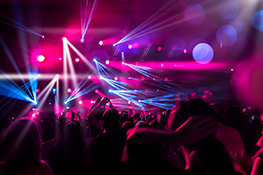Stage Lighting: From Zero to Hero in 6 Easy Steps
By the StageLights.in Team
Understanding Your Stage and Show
Before you even think about plugging in a fixture, you need a solid plan. Consider the size and shape of your stage. What’s the overall aesthetic of the production? Is it a dramatic play, a vibrant musical, or a minimalist dance performance? The genre heavily influences your lighting choices. Mapping out your stage – even a simple sketch – will help you visualize light placement and angles. Think about key areas that need highlighting: the actors’ faces, important set pieces, and any special effects. Detailed planning prevents costly mistakes and ensures a cohesive look. This is your foundation for success.
Choosing the Right Fixtures: A Beginner’s Guide
The world of stage lighting can be overwhelming, but starting with the basics is key. For beginners, a combination of Fresnel, PAR, and LED spotlights often proves versatile. Fresnels offer a soft, even wash ideal for highlighting backgrounds or creating ambiance. PAR cans provide a more focused beam, perfect for accent lighting or creating dramatic effects. LEDs are energy-efficient and offer a wide range of color options, making them a popular choice for both beginners and professionals. Research the specific needs of your production and consider the intensity, beam angle, and color temperature required for each area.
Mastering the Art of Light Placement: Position is Key
Strategic placement drastically impacts the effectiveness of your lighting design. Consider the height, angle, and distance of your fixtures. Front lighting illuminates the actors’ faces, while side lighting adds depth and dimension. Backlighting creates separation from the background, enhancing the actors’ presence on stage. Avoid harsh shadows by using multiple light sources from different angles. Experiment with different positions to find what best suits your production and the desired mood. Remember, less is often more – avoid overwhelming your audience with excessive brightness or conflicting beams.
Color and Mood: Setting the Stage with Light
Color is a powerful tool in stage lighting. Different colors evoke distinct emotions and moods. Warm colors like oranges and reds create a sense of intimacy and warmth, while cool colors like blues and greens can convey a feeling of sadness or mystery. Consider using color gels to filter the light and achieve the desired effect. Experiment with color washes to create a unified atmosphere or use contrasting colors to highlight specific areas or characters. Remember to use color purposefully to enhance the storytelling and emotional impact of your performance.
Controlling Your Lighting: From Simple to Complex
Beginners can start with a simple dimmer board to control the intensity of their lights. As your needs grow, consider investing in a lighting console for more advanced control. This allows for precise adjustments of intensity, color, and movement, even programming complex lighting cues and sequences. For simple setups, using a lighting programmer and a DMX controller can be extremely cost-effective and easy to use. Learning the basics of DMX (Digital Multiplex) communication is crucial for anyone serious about stage lighting, opening doors to vast possibilities.
Practice, Patience, and Persistence: The Path to Perfection
Mastering stage lighting requires time and practice. Don’t be afraid to experiment and make mistakes – it’s part of the learning process. Start with simple setups and gradually increase the complexity of your designs. Attend workshops or online tutorials to enhance your skills and learn from experienced professionals. By consistently practicing and refining your techniques, you’ll transform your stage from ordinary to extraordinary, taking your productions to the next level. And remember, the resources available at StageLights.in are always here to support your journey!


 Auditorium Construction Services
Auditorium Construction Services 